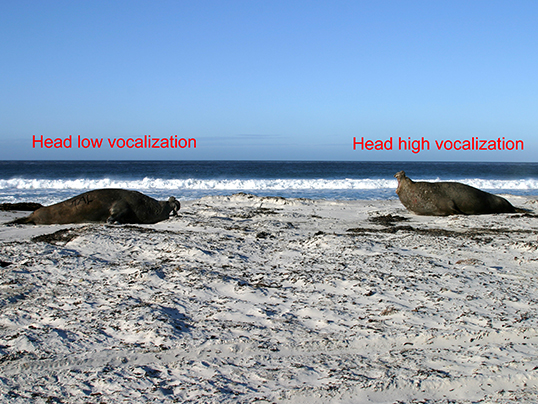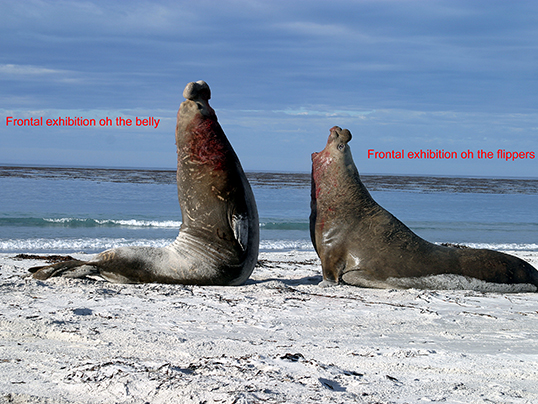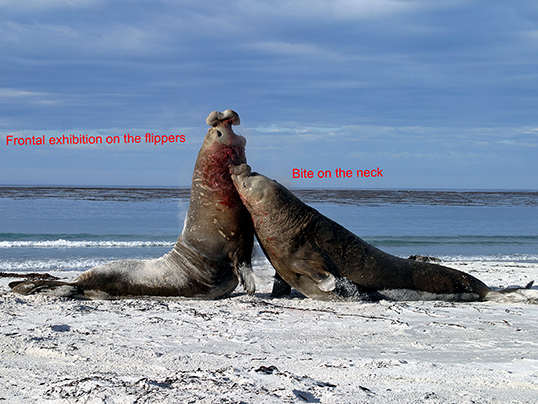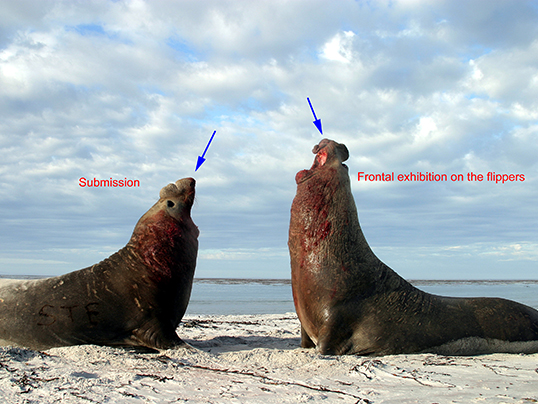Male agonistic behaviour and dominance
Male agonistic behaviour of southern elephant seals includes two components, conventional assessment and direct aggression: both are very important in theestablishment and maintenance of dominance relationships among males. Assessment through visual and acoustic threats is more frequent than direct aggression, and it is used to settle most of the contests, especially when the confrontation involves males with large differences in age, size, and experience (factors that all together are called "resource holding potential", RHP). Aggression through direct interaction with physical contact and long all out fight, although less frequent that vocalizations and displays, plays a crucial role in the first phase of the breeding season, when dominance relationships between older and larger males, with almost equal RHP, are established.

Before the fight, reciprocal vocalization with head in different positions

Display on the belly and on the front flippers

Neck bite by one male, while the other is still in display posture

End of the fight, one retreat in submission, the winner still displaying; note the different posture of the trunk
Specific tactics and strategies of competition adopted by individual males are well correlated with both structural and behavioural phenotype. Variance in behavioural performance between males is very large, and larger than the one measured for simple structural traits. The specific breeding situation has a significant effect on the relationship between performance in competition and breeding success, but the same basic trend is apparent in all harems and areas: the top males in the dominance hierarchies do the most of the copulations, and sire most pups. The results of agonistic interactions determine the structure of the dominance hierarchies. These hierarchies are stable and long lasting, and very linear, both at local and population level. An excellent performance in competition with other males is a pre-requisite of high breeding success. However, the local variation of parameters like breeding sex ratio and density of competitors moulds the strength of this correlation between dominance and breeding. Stochastic factors, and factors of deterministic nature but not related to male phenotype, may change the cost/benefit ratio of each mating tactic in different areas and harems.




